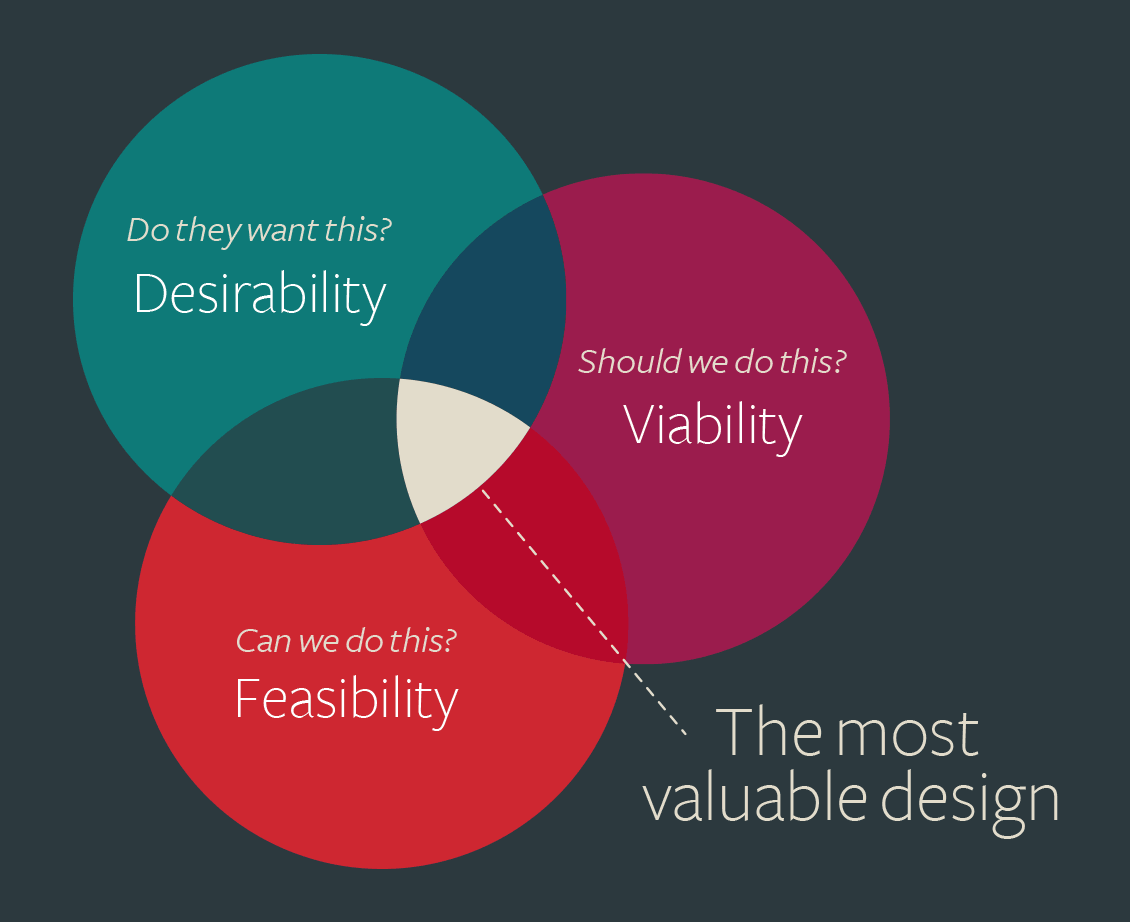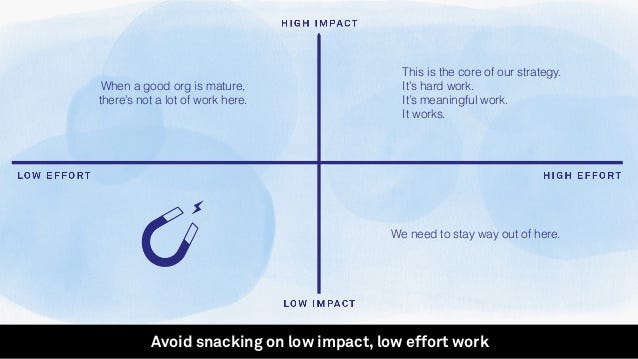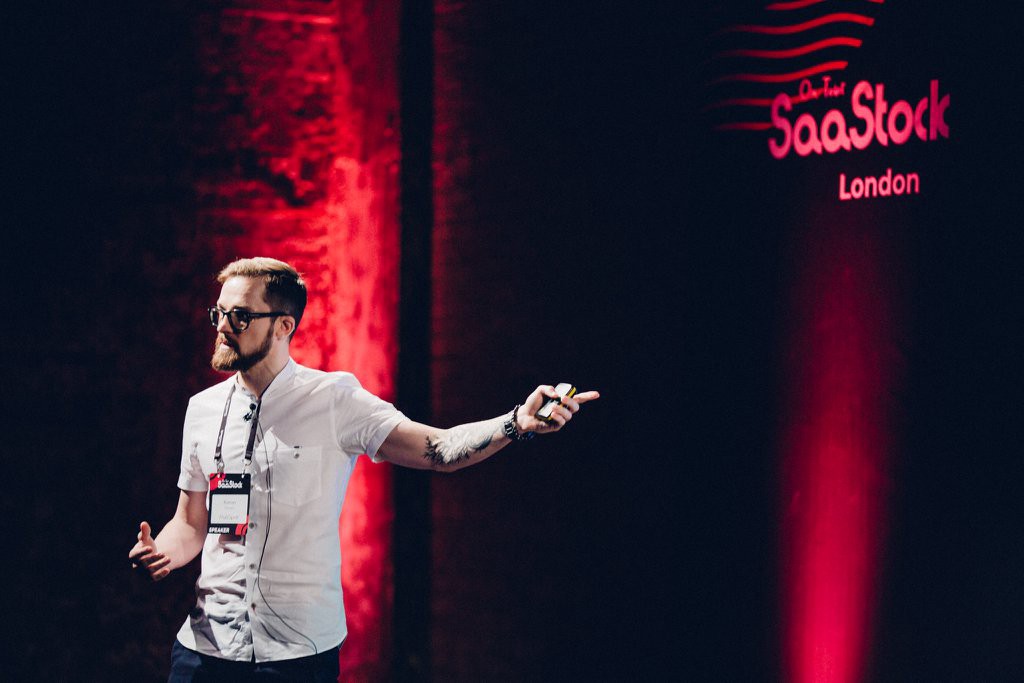So you’ve got a not-so-shabby idea and are ready to turn it into the next big SaaS thing. Or you have an MVP and want to go to the next step. Or you already have a kick ass product and now have to make some key product decisions going forward.
Whatever it is, we’re entering the realms of SaaS 3.0 — where bleeding edge technologies like automation and AI are stepping up the game by placing distribution and marketing into the product itself. And as a SaaS founder you have to act.
One of your duties is to leverage key strategies and take note of what’s fundamentally working — and of course, what isn’t.
We went back to see what product-oriented founders and managers spoke about on the SaaStock stages about building and growing a product — and in turn, we’ve compiled a list of key pieces of advice.
Higher public standards
Times have changed and what used to work in 2016 — in which companies began over serving with impeccable design is no longer enough. These are the words of Des Traynor, co-founder of Intercom.
As he puts it, everything already markets itself as simple, easy-to-use, and it works.
You need a product that not only works, but works exceptionally well.
“You can’t just break in with a compelling design;
you need something fundamental.” — Des Traynor
As a founder, it’s easy to get side-tracked and convinced that what’s missing are more features. Expanding many new aspects of your product and if possible all at once.
The more, the better, right?
Not quite.
In fact, Des shares that the fewer features, the better.
It’s a sentiment that Pipedrive’s, Tilt Paanenen (Head of Quality Engineering) and Sergei Anikin (VP of Engineering) share.
“Your users value existing features that work well, more often than having more features that don’t work as anticipated.”

The two believe that investing into the quality of a specific feature doubles the number of features. Rather than building another feature, invest more time into making specific features a higher quality.
Makes a lot of sense.
Spreading your product thin and ending up with something “for everything” isn’t as valuable as mastering your core features and becoming the “go-to product” for a specific department, leaving your competitions in the dust.
In such a competitive market, you must pick your niche and do it well. That’s what Des means by fundamental.
A product-first mindset
Building and maintaining the right product with the right amount of great features requires a product-first mindset. To make this a little less abstract and more concrete, Des outlines the characteristics that every release must have: feasibility, desirability and viability.

Des expands on this by adding that if any two are not aligned — no one will buy it, you won’t make money, and you won’t be able to deliver it yourself.
To position yourself well, you’ve got to establish a clear problem in the market (the more in demand, the better) and how you plan on solving it.
“You’re not a product-first company if the success of your product is not the core priority of your project,” according to Des.
To keep your priorities and positioning of your project in check, ask yourself these questions –
- Can I make money?
- Is it possible?
- And does anyone actually want it?
A product-first company means putting the functionalities of your product above all else. Forget your ego, how big of a dent you want to create in the world, etc. What matters here is first making your product do what it sets out to do without getting side-tracked.
To avoid losing a lot of money and time, don’t set out to solve a rare problem that’s not a big deal to everyone else.
Make clearer decisions

In every process, you’re either doing high-impact or low-impact work.
If you stopped for a second, would you know the answer for yourself between the two?
A lot of teams get stuck in “keeping busy” but are objectively not creating much impact.
“Your decisions must ensure that you sell what you build and you build what you sell.” — Des Traynor
Ruthlessly asking yourself these questions will help you avoid the traps of low-impact and low-energy work:
- What are you actually trying to do?
- What are the steps you’re making?
- Can you draw a dot to what you’re doing today and see how it’s going to evolve your product in the future?
Shifting your focus to see “the big picture” and having a concise product definition can work wonders for your product strategy and management as well.
At Intercom, Des shares that they only allow 10–15 things a year. In other words, very few feature requests are accepted and let in. Every process and step has to align with the product’s vision, and if not, it’s just a distraction that can potentially decrease your product’s overall value.
“Features do not protect you in SaaS.”
Only let in the stuff that matters or will boost your project. More valuable questions to ask yourself here:
- Does it align with your vision?
- Can you maintain it and support it?
- Can you profit from it?
- Would this pull your marketing off-course?
The reason these questions are so important is because the right product is central to your success. In the words of Des, building a great product first will solve a lot of congenital business problems.
A polished product, makes convincing anyone to give it a try much easier.
Keep everything aligned
One of the key ideas Des talks about is the importance of keeping your teams on the same page:
“Marketing, for example, is not one team, it’s a whole set of teams to help grow the product. They must all have a reasonable level of mastery for the sub categories. If done well, the value is outstanding. It can compound your interest of returns, attract attention, and even help you hire top talent.”
As Des often mentions, “Everything has to align on a string — the vision, new features, every single decision and step.”
It could also be practical to set up quarterly meetings to establish how each team will be allocated for that quarter.
A simple step like this can go a long way in tightening your company’s focus and ensuring that everyone’s on the same page.
Do the groundwork
Intercom didn’t focus on marketing in the first stages. They didn’t even have a sales team. Instead, they focused on creating a product that worked.
They are not the only ones. Hailing from a completely different industry and space, Jean-Charles Samuelian, CEO of Alan, a French company aiming to disrupt the healthcare market in France, admits that it took him around 8–9 months to solidify his long-term vision and lay the groundwork for his company.
He purely focused on building the product and making adjustments according to the long-term vision. Which was in no way easy. They still had to live in the uncertainty of not knowing if they would be able to market it.
Jean-Charles next had to understand his company’s culture, decide how to organize himself, and first identify the kind of people he wanted to attract.
Once he had a clearly working product that solves an in-demand issue, Alan was well positioned and ready to be placed in the hands of users.
As a product-first company, Jean-Charles knew that he couldn’t lose the focus of enriching his user’s journey.
“Trying to create a totally incredible experience for your users will make a huge difference in the long-term, as well with keeping your customer acquisition costs very low. In turn, customers will love to speak about your product.”

Within the product there are many hidden growth opportunities
Kieran Flanagan, VP Marketing at HubSpot who speaks a lot about product-led growth is always on the lookout for further ways to grow. And so should you be.
According to him, integrations are something not to be forgotten and alongside useful features can have an incredible impact on buying behaviour. As Kieran points out they can be useful to attract people from other popular platforms. Examples abound.
“Quora and Pinterest, for example, made it possible to be easily integrated on Facebook to share things with friends and family. Even Grammarly and Loom have grown through interactions with popular apps.”
An important caveat for product-led growth from Kieran: Products have to fit channels, not the other way around. At least that is the case with HubSpot.
Some tips straight out of Kieran’s talk for growing your product –
- Provide value first
- Allow your users to experience your product for free
- This will trigger virality and widen the top of your funnel
Kieran also shares that referral mechanisms — in which you give your users an incentive to refer friends to gain paid features for free, can be a great way to get people to know about your product and see it “in action.”
It’s an idea that Des emphasizes as well: a happy customer exposed to excellent seamless experience will spread the word for you.
A key part of that is allowing users to get familiar with your product. The “try it before buying” technique just works.
Users end up adopting more when the starting price is low, compared to a super expensive package that they can’t even try.
These kinds of decisions stem from having a lot of empathy for the user and what they need to know. Ryan Singer, Head of Strategy at Basecamp takes this further. According to him to position your product well and offer value to the customer you need to switch over to the demand side of the market and explain the situation that you’re solving. Specifically explain How does it help a user and what they can they expect?”
This puts the much-needed twist on your product to allow your customers to see exactly why they need you in the first place.
Ryan adds,
“Instead of just saying it’s simple, easy and clean — show them.”

In conclusion
Competition is pretty fierce these days, but it doesn’t have to be — especially if you position your product to stick to activities that align to its core values, and then prioritize functionalities that work above all else. A product-first company will always focus on the fundamental pillars first.
With a working product that excels in its domain, your product can rise to be among the players and game changers that is able to demonstrate a product in action — with the ability to market itself to the right audience to grow and get the ball rolling.
We will be covering a lot more product, product evolution and ways to grow through your product at SaaStock18. October 15th to the 17th. We are bringing speakers such as Norm Happ, SVP Sales, Partnerships and Customer Success, Evernote, Laura Urquizu, CEO, Red Points and Adam Marcus, Managing Partner, Openview Venture Partners. During SaaS.City, OpenView will also run a product-led growth bootcamp. Grab your tickets now to see them and many other speakers.





